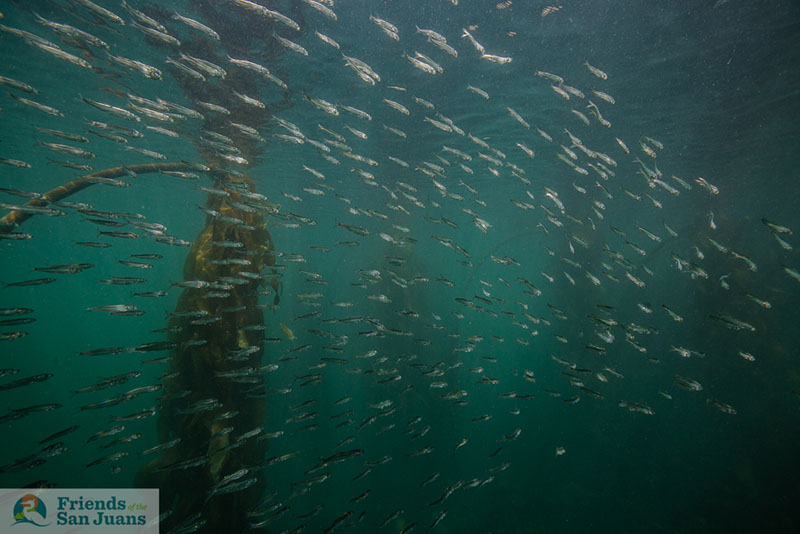||| from Katie Fleming for Friends of the San Juans |||
Opportunity to help protect and restore eelgrass, herring, and salmon in the San Juans Pacific herring – also known as forage fish – play a key role in marine food webs as food for out- migrating juvenile salmon, seabirds, and even marine mammals. Herring rely on sensitive eelgrass meadows found along our tidelands to spawn and incubate their eggs.
Herring spawning populations in the San Juans are classified by the WA Department of Fish and Wildlife as critically depressed. In San Juan County, herring only spawn at a handful of locations: West Sound and East Sound on Orcas Island; Blind Bay on Shaw Island; Wescott and Garrison Bays on San Juan Island; and Mud, Hunter, and Shoal Bays on Lopez Island.
“This is where an opportunity for some of you comes along. Do you live near one of these areas and own shoreline property or tidelands? Do you have a mooring buoy that could use an upgrade? If so, Friends of the San Juans would like to hear from you,” said Jess Newley, Friends’ Marine Science Coordinator.
The eelgrass in these herring spawning bays is so critical to salmon recovery that Friends of the San Juans has received grant funding from the WA State Salmon Recovery Funding Board and the U.S. Fish and Wildlife Service to find ways to both protect and restore it. “We are thrilled to be able to offer financial and technical assistance to landowners to evaluate, upgrade, and/or relocate outdated mooring buoys to reduce impacts to eelgrass from boating,” said Tina
Whitman, Friends’ Science Director.
Tina continued, “While boating is just one of the many pressures facing the sensitive eelgrass habitats where herring spawn, there are many simple actions that can be taken to support boating and protect the marine environment.”
Eligible activities in this voluntary program include: evaluating, upgrading and/or relocating outdated mooring buoys; removing other stressors or marine/beach debris from herring spawning habitats (derelict floats, creosote, etc.); installing ‘anchor out’ navigational buoys to mark the edge of the eelgrass growing zone; and installing new public buoys to reduce
anchoring in herring spawning grounds.
If you’re an interested public or private waterfront property owner in the above herring spawning grounds please contact Friends at tina@sanjuans.org or 360-298-7616 or visit sanjuans.org/greenboating/ to learn more about opportunities to restore food webs for salmon and the Southern Resident orcas and support green boating.
Photo: Pacific herring off San Juan Island by Jess Newley
**If you are reading theOrcasonian for free, thank your fellow islanders. If you would like to support theOrcasonian CLICK HERE to set your modestly-priced, voluntary subscription. Otherwise, no worries; we’re happy to share with you.**









It is curious that WDFW has opted to remove many mooring buoys from parks such as on Jones Island and Sucia. Now there are more people than ever anchoring in the eelgrass. Earlier this week we saw seven boats anchored in the two southern bays of Jones Island where there used to be at least four buoys, well spaced to limit anchoring around them, where now there are only three and lots of anchoring room.